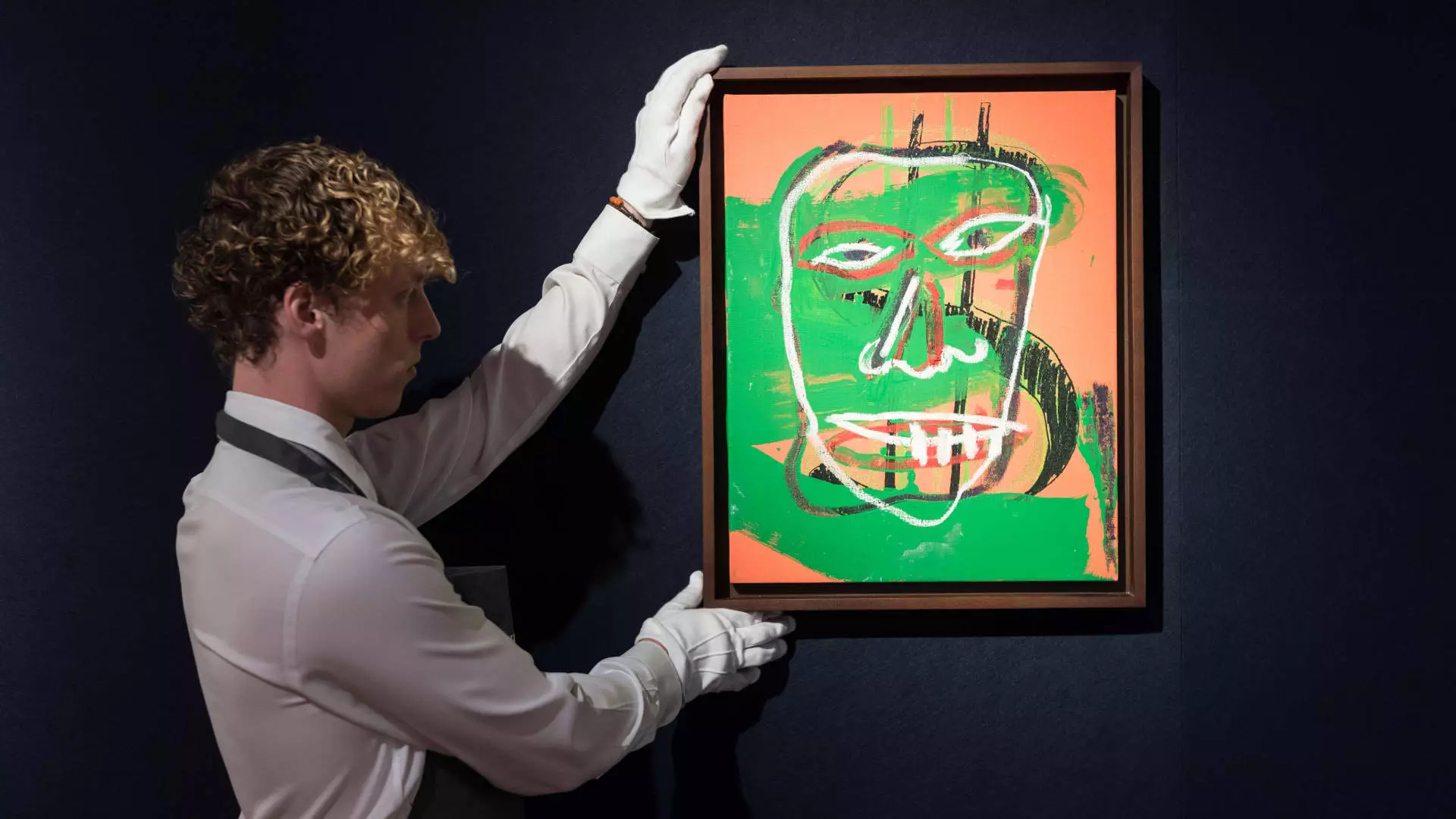The global art market is currently in a challenging phase, facing its second consecutive year of decline. This downturn signals a significant shift in buyer behavior, as a new generation of collectors emerges, bringing different preferences and spending habits. Recent findings from The Art Basel and UBS Survey of Global Collecting reveal that renowned auction houses like Christie’s, Sotheby’s, Phillips, and Bonhams have experienced a notable drop in auction sales—26% lower than in 2023 and a staggering 36% beneath the market’s peak in 2021. The changing dynamics showcase a stark contrast in the intentions of collectors, with only 43% planning to acquire art in the coming year, down from over half the previous year, while the percentage of those looking to sell has risen to 55%.
Paul Donovan, the chief economist at UBS Global Wealth Management, noted that high-net-worth individuals are reassessing their spending on art, indicating a more deliberate approach to acquisitions. The upcoming high-profile events in New York and Art Basel Miami Beach in December provide some hope for dealers and auction houses. Yet, underlying concerns remain, primarily influenced by geopolitical tensions and economic weaknesses in critical markets like Europe and China. These factors are diminishing buyer confidence and deterring investments in high-value art pieces.
Despite this challenging landscape, there are indications of optimism among wealthy collectors; 91% maintain a positive outlook about the art market’s performance over the next six months, a significant increase from 77% at the end of 2023. Importantly, their median annual spending on art remains stable, hovering around $50,000. However, the general trend points toward muted demand across various art categories, exacerbated by online sales fluctuations and diminishing buyer interest.
As the art market evolves, it faces the challenge of a generational divide. Wealthy collectors from older generations are downsizing their collections by parting with artwork deemed less significant. Meanwhile, younger collectors—primarily from Gen X and millennials—are stepping into the market with distinct preferences for more affordable and contemporary pieces. This generational shift underscores a misalignment between available options and the expectations of prospective buyers.
UBS’s report elaborates that the anticipated value growth in the art sector is unlikely to occur due to the increasing volume of sales being conducted at lower price points. Older collectors appear to be liquidating collections, often focusing on less valuable artworks. As Donovan aptly pointed out, the wealthiest art buyers have started slowing their acquisition of high-priced pieces as they reevaluate their spending.
Shifting Spending Patterns
The survey data highlights an interesting trend: Gen X collectors emerged as leading spenders in 2023, often surpassing millennials and far exceeding baby boomers or Gen Z in art spending. With an average expenditure of around $578,000 in 2023, Gen X collectors are not merely passive participants; they are shaping the landscape and redefining the notions of art ownership.
However, broader data suggests that wealthy collectors are reassessing their overall exposure to art as an investment class. The average allocation of their portfolios dedicated to art has diminished from 22% in 2021 to merely 15% in 2024. This shift hints at a hesitancy to engage in the art market, which some attribute to the recent performance of alternatives such as stocks and other high-value assets. Interestingly, collectors with assets exceeding $50 million maintain only a quarter of their wealth in art, reflecting a cautious approach towards this volatile asset class.
With nearly half of art collectors indicating barriers to the international movement of art as their primary concern, alongside issues surrounding legal disputes and ethical practices within the art trade, it’s clear that the path to recovery for the art market is fraught with challenges. Additionally, the anticipated impact of a vast wealth transfer from older to younger generations could facilitate a broader reallocation of art ownership, but it is essential to note that many inheritors express a desire to hold onto their inherited art rather than sell it immediately.
As the art world copes with shifting tides, it will be crucial to embrace the diversification of preferences among different demographics. New methods of engagement, more affordable price points, and transparent practices may be the keys to revitalizing an art market that is simultaneously battling generational shifts and economic uncertainty. Embracing these changes could foster a renewed sense of enthusiasm and investment in art, setting the stage for a more sustainable future in the ever-evolving landscape of art collecting.

